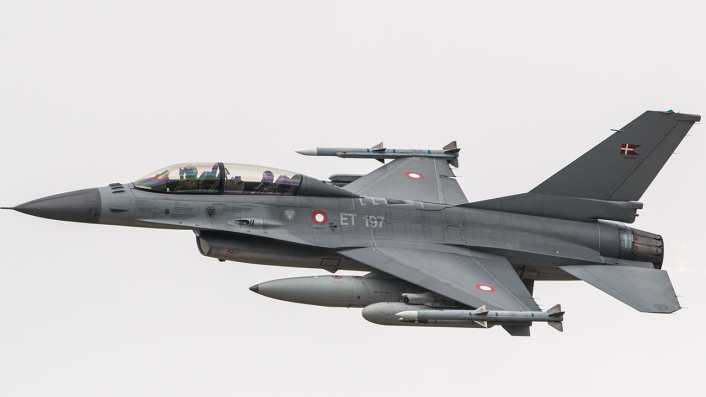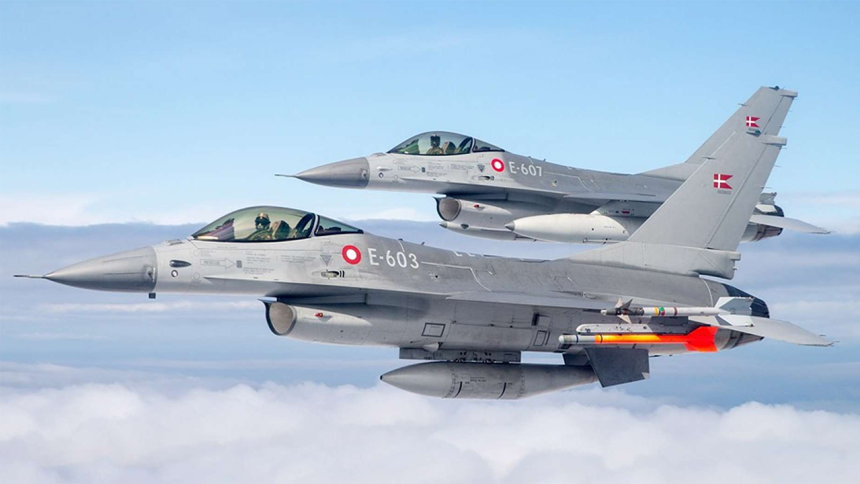As per plans, Denmark is supposed to transfer 19 F-16s to Ukraine.
Denmark’s Prime Minister Mette Frederisken has announced that F-16 fighters the country is set to transfer to Ukraine will be available to Kyiv “within a month,” according to RBC Ukraine. This is consistent with previous announcements by Danish officials and other European leaders.
Actually, it seems like the PM actually said “within months” and not “a month”.
Correction: Danish PM meant to anounce F-16 in UKR within MONTHS (not month), a source just clarified. Apologies. I will delete original tweet.
— Joerg Lau (@joerglau) May 13, 2024
As per plans, Denmark is supposed to transfer 19 F-16s to Ukraine. “F-16s from Denmark will be in the air over Ukraine within a month,” said Frederiksen. In March, Dutch defense minister Kajsa Ollongren said that Denmark would be the first to supply F-16s to Ukraine by the summer of this year.
On May 6, 2024, Ollongren again said, during a joint briefing with her Lithuanian counterpart in Vilnius, that the first F-16s would arrive in Ukraine if the plan for “training” of “Ukrainian pilots, maintenance personnel” and “handing over the aircraft themselves…stays on path,” according to Delfi. Late in March, Belgian Prime Minister Alexander De Croo estimated that Ukraine would receive the jets ‘before the summer’.
Ukrainian Pilot, Technicians Training Pilot on War Footing
In 2023 the Netherlands and Denmark led a coalition to transfer F-16 fighters to Ukraine. This was followed by the first group of Ukrainian pilots successfully completing their basic training program in the United Kingdom and commencing training on F-16s in Denmark. After the United States approved F-16s for Ukraine in the fall of 2023, a base was also set up in Romania to help train Ukrainian F-16 pilots.
On May 10, NATO released a small feature interviewing a Ukrainian pilot, identified as “Moonfish” – who previously piloted MiGs – describing the F-16 as a “super fun” and “more agile” jet. The text in the video said Ukrainian pilots have been learning to fly the F-16 in Denmark, with the Royal Danish Air Force Major General Jan Dam subsequently praising the F-16 as having been “updated several times.”
🇺🇦 Ukrainian top guns train with NATO F-16 fighter jets
A coalition of NATO Allies has agreed to donate their F-16s to the Ukrainian Air Force, and as part of the deal, Danish instructors are training Ukrainian pilots, technicians and ground crew how to fly and maintain the F-16 pic.twitter.com/0I6oa3DfEF
— NATO in Ukraine (@NATOinUkraine) May 10, 2024
However, challenges remain with both the proficiency and logistical aspects of its use by the Ukrainian Air Force (UAF), and the Russian military which has been preparing for the fighters’ arrival, while making tactical gains. The Danish defense ministry acknowledged the training and infrastructural issues in a February 22 statement.
“The final handover of the first Danish F-16 combat aircraft depends, among other things, on the Ukrainian pilots and the necessary Ukrainian support personnel being fully trained, as well as on the necessary logistics and infrastructure being in place in Ukraine. The international air force coalition in support of Ukraine is working hard to ensure this,” it said.
Strategic and Military Situation
Intersecting geopolitical, geopolitical, and tactical concerns also characterize the use of the F-16s – desperately needed for ground attacks and deep penetration strikes behind Russian lines on logistical and supply nodes. Moscow has declared striking NATO (North Atlantic Treaty Organization) bases bordering Ukraine as “legitimate targets” if the F-16s take off from there. This would directly bring both Europe/US and Russia into war, an eventuality that both parties wish to avoid.
And from a purely military technological point of view, Russia has also displayed the ability to strike deep into as far as western Ukraine. Moscow often uses a combination of long-range stand-off fires missiles like the Kh-101 ALCM (air-launched cruise missile) fired from the Tu-95MS strategic bomber; the Kinzhal aeroballistic hypersonic missile from the MiG-31K; the Iskander and Iskander-M tactical ballistic missiles; the sea-launched Kalibr cruise missiles and the Geranium-2 kamikaze drones in a coordinated fashion for strikes into Ukrainian cities.

The last such strike into western Ukraine was reported in mid-April, with targets being hit as far as Lviv, near the Polish border. It is however not clear what missiles Russia used in these strikes.
Ukrainian officials now note that with the attempt on the city of Kharkiv and new strikes on its energy and power supply infrastructure, Russia is trying to push the frontlines as far as possible and hit Ukraine’s weapons production capacity. This is being done before the arrival of F-16s and new arms donations from the US and Europe, to offset any tactical gains they might accrue to Ukraine, or complicate their use.
Politico carried a series of reports quoting unidentified Ukrainian officials who painted a “grim picture” of the frontlines possibly “collapsing.” Ukraine’s ground forces commander General Oleksandr Pavliuk said on May 10 that the situation “can turn against Russia” in the northeast and Donetsk if Ukraine receives weapons within a month or two.”
Politico however said Pavliuk was “appearing to be readying Ukrainians for setbacks.” This is because he argued that the city of Chasiv Yar isn’t strategically important and described it as a “regular urban settlement.”
Russia vs F-16s
Russia’s glaring weakness before Western fighters is the lack of Airborne Warning and Control Systems (AWACS), particularly after it lost three of its A-50U Mainstay planes to Ukrainian drone and SAM (surface-to-air missile) strikes.
Ukraine has also succeeded in destroying some of its S-400 batteries. With the arrival of the 300-km range Army Tactical Missile System (ATACMS), it might again threaten Russia’s supply lines and tactical formations on the frontlines.
This is especially true if Ukraine adopts a strategy where it uses the F-16s, the HIMARS (High-Mobility Artillery Rocket System), and the ATACMS in highly coordinated attacks, aimed at a particular sector. This can be preceded by days, if not weeks of surveillance by American MQ-9 Predator, MQ-4 Global Hawk ISR drones, and RC-135 Rivet electronic intelligence (ELINT) aircraft of Russian ground positions and air defense radar placements.
But, since such systems come from the US and European allies, carrying out such synergized strikes across a front would be a tall order.
Anyway, Putin threatened to destroy F-16s wherever they are based. Ukraine said it will disperse and hide the jet to save them from Russian attacks.









